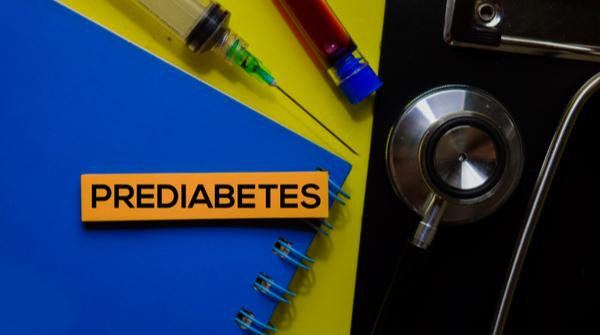Prediabetes happens when the blood sugar level is high but not high enough to be diagnosed as Type 2 diabetes. Prediabetes increases the risk of developing diabetes, along with many health problems, like heart diseases, kidney ailments, etc.
Prediabetes is a condition when the blood sugar level gets higher yet not high enough to be considered diabetes, an HbA1c between 5.7 % - 6.4%. Those with type 2 diabetes often had prediabetes first. Thus, if diagnosed early, carefully managing prediabetes can prevent the onset of diabetes. While prediabetes diagnosis may seem frightening to some people, it is a chance to take control of their situation before facing any severe consequences. Managing weight, having a healthy diet, avoiding stress, and exercising can bring glucose levels back to normal range and avoid risks for other health issues, including type 2 diabetes, heart issues, etc. Everyone needs to get their blood sugar level checked regularly, especially if they are at risk. Knowing about the signs and symptoms can help people be aware, take control, and cure prediabetes on time. Here’s more on warning signs, causes, and risk factors of prediabetes.
Symptoms (Warning Signs)
Prediabetes comes with no clear signs or noticeable symptoms and hence may go undiagnosed for years. But there are some warning signs which can help people be alert and go for a check-up. These include:
- Frequent urination
- Fatigue
- Increased thirst
- Blurry vision
- Increased hunger
- Sudden weight loss
- Wounds that won’t heal fast
Causes of Prediabetes
Prediabetes occurs when insulin stops working properly. The pancreas creates a hormone called insulin which helps the cells to use glucose from what you eat and convert it into energy for the body. When the insulin does not work the way it should, extra glucose builds up in the blood, increasing its level higher than normal. It is a sign of prediabetes. Mentioned below are a few things that lead to the development of prediabetes.
- Cells become insulin resistant or low responsive to insulin
- The pancreas produces more insulin, trying to make cells respond
- Extra glucose stays in the blood rather than entering the cells
- Blood sugar keeps rising
Risk Factors
There are certain risk factors that make a person more likely to get prediabetes. These risk factors include:
- Age
- Obesity or excess weight
- Lack of sleep
- A poor or unhealthy diet
- A family history of diabetes
- High levels of triglycerides and LDL
- Low HDL cholesterol levels
- Smoking
- Stress and anxiety
Complications Related to Prediabetes
If left untreated, prediabetes can turn into type-2 diabetes or lead to other health problems, such as:
- Loss of a limb (amputation)
- Kidney disease
- High blood pressure
- Blindness
- Skin infections
- Nerve problems (peripheral neuropathy)
- Heart issues
Prediabetes Reversal Tips
Prediabetes diagnosis is a sign to take vital steps to protect the health. Often, people diagnosed with prediabetes develop type-2 diabetes in a few years. So, they have time to avoid this from happening in the future. Changes in the diet according to glycemic index and healthy lifestyle choices, among other preventive measures, can help in prediabetes reversal and better management of the condition to prevent the onset of diabetes.
Some tips are:
prediabetes reversal
- Getting active and exercising daily for at least 30 minutes
- Eating healthy foods
- Managing weight
- Avoiding smoking and alcohol
- Keeping cholesterol level normal
- Monitor blood sugar as per the instructions given by the doctor
Taking the right action at the right time can help people cure prediabetes and avoid further risks. It is wise to go for a consultation and seek professional guidance for better results.

